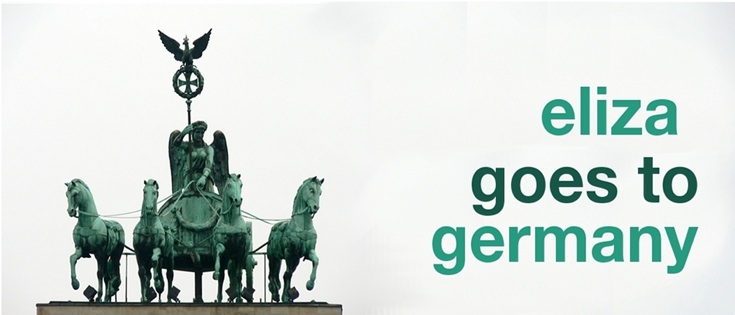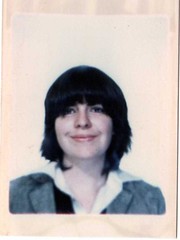With Georgia long gone to Argentina, Leah’s eventual departure from New Orleans on Friday and myself awaiting my flight to Vancouver, the epoch-defining Ginnivan Sisters Adventure has come to an end. We did so much and saw so much that the thought of trying to do justice to it makes me queasy, even more so then the lukewarm serve of Red Beans n’ Rice (the only vegetarian meal airside at the Louis Armstrong International Airport) has already done. But I’ll see what I can do.
For the last week I’ve been in New Orleans, Louisiana. We took the Amtrak (a luxurious step up from Greyhound) from Memphis, and walked out of the station and into a humid inferno. Most of what I know about New Orleans I learned after Hurricane Katrina, aside from some vague prior understanding that it was important for jazz and blues. Birthplace or some such. But I was really looking forward to stopping for a while, and the Lonely Planet entry said that New Orleans had it all – good music, astounding food, an insane party scene, touristically orientated, multicultural, history by the buckets. And it’s been great, definitely a highlight of the trip.
The best thing about couchsurfing is that you have an inside guy from the moment you arrive in the city. On our first night, our host Justin (artist, thinker, sometime-conspiracy theorist and burrito maker) placed us in the back of his friend’s ute - apparently legal in Louisiana - and drove us to the best music venues in town. We left him to do the more touristy things – a swamp cruise to see alligators and other wildlife, eating beignets (weird donut things laden with icing sugar) take the ferry across the river, walk around the touristy French Quarter, avoid the trashy Bourbon Street. After the sisters left I couchsurfed with a chemistry PhD studying Russian couple, who entertained me with red wine, fresh watermelon and Russian comedy classics.
New Orleans is fighting a losing battle against the forces of nature. Across town, tree roots push up the footpath or simply break it in two. Houses abandoned after Katrina are entirely covered in ivy. Some are half-sunk in canals. Spanish Moss appears out of nowhere and hangs from the trees like a greenish-grey mist. The town is crawling with little jumping geckos, squirrels and cockroaches. And when it rains, streets become rivers, rivers become seas and umbrellas become farcical. But we got used to it. After Leah and I got caught in a deluge and soaked through to underwear, we left our valuables somewhere safe, I waited for Leah to put on her bathers and we went for a wet and wild adventure through the newest parts of the Delta.
At some stage during the last week, the Ginnivan Roadshow suffered a casualty. My much beloved Macbook, which has seen me through almost 2 years of commutes to university on the back of my bike and an entire season of Guilty Radio, is inching closer and closer to meeting its maker. There’s a nasty crack in the top right hand corner of the screen which is currently outlined in pixilated blue and black. With every keystroke the screen ripples and the crack grows ever so slightly. Twice repaired under warranty and that safety net long gone, I think our time together is almost up.
Before New Orleans, there was Memphis. Memphis is named after an ancient Egyptian city, and about 20 years ago some rich crackpot took this to heart and built the world’s 3rd largest pyramid there. Unbeknownst to us, we’d rolled into town in the middle of Elvis Week. It was creepy spotting impersonators around the town in casual dress, but not as weird as the cash cow that is Graceland, Elvis’s former private residence. We did the tourist thing and went on a tour, were amazed and repulsed, bought a mug.
We stayed with Jeremy, a generous and slightly disenchanted college graduate halfway through his Teach for America program at a disadvantaged school out of town. We caught busses everywhere, much to widespread disbelief. Went to the National Civil Rights Museum and got inspired. Explained to some sceptical country kids from Mississippi that the earth had two hemispheres, and it was actually winter where we came from. We were told quite frankly that the white people lived in the good parts of town, the black people in the bad parts, and felt like we’d offended everyone and crossed some invisible social boundary when we found ourselves in the wrong place.
And before Memphis, there was Chicago. Our couchsurfing requests had come to nought – our one almost-certain guy pulled out a couple of hours before we arrived at his place because he was, as he explained in a barely intelligible text message, “cooking soup”. But using Hotwire we scored three-star hotel rooms for a cheaper price than hostel dorms. While it was a pain in the arse to schlep our luggage all over town each night in the humidity, watching The Colbert Report in overconditioned rooms with crisp sheets, sucking on ice-cubes from our private ice bucket, swimming in rooftop pools and checking out at noon was more than enough recompense.
The world’s first skyscraper was built in Chicago and the skyline is crowded by them, giving the downtown a constant air of industry and progress. The great Sears Tower was the biggest in the world for a while until the Asian countries started getting all uppity and prosperous and decided to show it in phallic displays. Chicago’s skyscrapers rise straight up from the banks of the river, which cuts a winding aquamarine path right through the city, criss-crossed by rust-coloured bridges and patrolled by tour boats.
I am a great believer in public spaces, particularly if they are grassed, and I was deeply impressed with what Chicago had to offer. Between downtown and Lake Michigan is an incredibly stretch of parkland, which was being cleaned from the revelries of Lollapalooza the morning we arrived. This park became our base. On one night we joined thousands of other Chicagoans in Grant Park (the Grant Park of Obama victory speech fame, swoon) to watch a free screening of Psycho; on the next we took a bottle of wine to Millennium Park to listen to an open-air orchestra.
The people that inhabit the US of A must surely be this country’s defining feature. Last time I travelled the States, my contact with natives was pretty much limited to friends of friends, family, and members of the service industry. But this time has been different. Couchsurfing has taken us right inside their homes. Budgets have placed us right on their public transport systems. Accordingly, I feel better equipped to make a few observations (or denigrating generalisations, depending on your allegiances).
Americans love to talk. With anyone, about anything, at anytime. For the first couple of days I was taken aback by this friendliness, particularly since Germans will only talk to strangers if the situation absolutely demands it (such as if someone is standing on your toe or the imminent death of a bystander). And their favourite topic? Themselves.
In many Americans that we met, there is this anxious desire to be listened to and understood – a need to define themselves as individuals. Often, you’ll ask an American a question and they’re off and away. Once they’ve squeezed all they can from the topic, there will be an uneasy silence while they wait for you to ask the next question. If the conversation happens to swing to something else, their eyes will glaze over and you can tell that they’re waiting for a chance to direct it back on course. I realise that this may sound a little bitter, but it does get tiresome. My love of asking questions has definitely taken a battering. I just don’t want to know anymore.
Last time I came to the States I was taken aback by the weird politics surrounding race and how monolithic cultural groups (mainly White, Black, Hispanic or Asian) are a key source of identity and stereotypical indicators of socio-economic status. Travelling through the Mid West and South and learning about segregation and slavery and the horrifying relationship between white and black Americans cleared a lot of things up, but left a lot of things cloudy.
For instance, I never got around to understanding why black men on the street (and no-one else) would invariably greet us with a “Hello ladies, how’s it going?” – not in a sleazy way, just as an acknowledgement. And how racial divisions are still so strong in Memphis and New Orleans, even though they both claim to be centres of black empowerment. And what appears to be the undesirability of integration from all sides. It’s frustrating to be classified as “White” on sight and being inevitably dragged into the fray, even though I’m Australian and had nothing to do with anything.
I definitely prefer Australia’s approach, which seems to embrace multiculturalism by bringing everyone into the fold, rather than leaving groups on the margins. Well, with the glaring exception of our indigenous population, which probably disproves this argument entirely. Thoughts and comments, readers?
As I finish this post I am high up in the air somewhere above North Dakota, where the Ginnivan Sisters Journey began all those weeks ago. I’m on my way to Vancouver to spend some time with my ex-housie Kate, check out her new life and ply her with duty-free alcohol (as yet unfound). Reading back over this post, I’m realising how much I’ve left out and how it really doesn’t do justice to what’s happened. You may have to use your imagination.
Rusutsu
13 years ago


A fantastic post Eliza. I loved your poetic and contrasting descriptions of the various city landscapes. Beautifully written. YCB
ReplyDelete